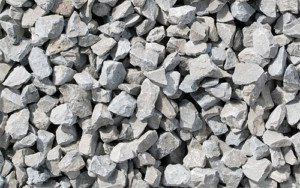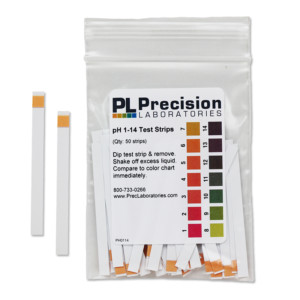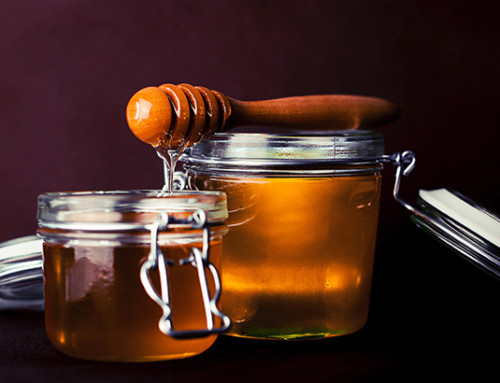The EPA (U.S. Environmental Protection Agency) is a great educational resource that not everyone is aware of, so we like to share some of their experiments and informative web pages whenever possible. They have some great information about acid rain, and several experiments on this topic that use pH test strips, so that’s what we’re going to do today.
Let’s observe the effects of limestone on the acidity of water. We’ve talked before about the differences in calcium deposits and water hardness across the nation. There are many factors that change from place to place that affect the properties of water. Limestone is another example. In some areas of the country, limestone is abundantly present in lakes bottoms and soil, which helps neutralize the effects of acid rain.
 In some places, crushed limestone is added to lakes, ponds and other aquatic areas to help neutralize the effects of acid rain, which preserves important aquatic systems until the source of the acid rain can be decreased. This is known as “liming”, and it has been occurring in lakes and ponds across the country for years.
In some places, crushed limestone is added to lakes, ponds and other aquatic areas to help neutralize the effects of acid rain, which preserves important aquatic systems until the source of the acid rain can be decreased. This is known as “liming”, and it has been occurring in lakes and ponds across the country for years.
Limestone is often added to lawns, gardens, pastures and farm fields to supply calcium and decrease soil acidity. For this reason, you can often find crushed limestone at lawn and garden stores or plant nurseries. This information will come in handy in a minute because you’ll need to get some crushed limestone for this experiment.
For more information on liming, the USDA and other government and educational websites have lots of information.
In addition, for this experiment, it may help you to check out our blog article on pH and buffers.
Let’s get started!
Materials

- pH test strips that at least cover acidic to neutral range:
- Vinegar
- Distilled water
- Measuring cup and spoon
- 2 spoons for stirring
- ½ cup crushed hydrated limestone or spray limestone
- 2 bowls (about 2 cup capacity)
- Plastic wrap
- Laboratory notebook and pencil
Experiment
- Label one bowl “Vinegar”, and label the other bowl “Vinegar + Limestone”.
- Pour ¼ cup of the crushed limestone into the “Vinegar + Limestone” bowl.
- Pour 1 teaspoon of vinegar into 2 cups of distilled water, and stir well. Check the pH of the solution with a pH test strip. Dip the strip into the solution for 1 second, remove, and compare to the color chart immediately. The pH of the vinegar/water solution should be about 4. If it is below pH 4, add a sprinkle of baking soda, stir will, and recheck the pH. If the pH is about 4, add a drop or two of more vinegar, stir well, and recheck the pH. Record the pH in your laboratory notebook.
- Pour about 1 cup of the vinegar/water solution over the limestone in the bowl, and stir well with a clean, dry spoon.
- Pour the remaining vinegar/water solution in to the bowl labeled “Vinegar”.
- Check the pH of the “Vinegar + Limestone” bowl solution. Record the pH in your laboratory notebook.
- Cover each bowl with plastic wrap to prevent evaporation.
- Every day for 6 days, stir the contents of each bowl with a clean, dry spoon. About 4 or more hours later, after the limestone has settled, test the pH of the solution in each bowl and record the results in your laboratory notebook.
Questions
Did the pH of the vinegar/water solution over the limestone become more or less acidic during the 6-day period? Why? (Hint: The more acidic something is, the closer the pH is to 0.)
The vinegar/water/limestone solution should have become less acidic, changing from a pH of about 4 to as much as a pH of 6, depending on the water content of the limestone you used.
Does crushed limestone buffer the acid?
Yes, by neutralizing it.
Did the pH of the vinegar/water solution without limestone change during the 6-day period?
The pH of the vinegar/water solution without limestone should have remained the same.
Remember, you can find this experiment and more on the US EPA’s website, a great educational resource.







Leave A Comment